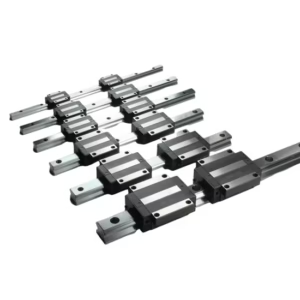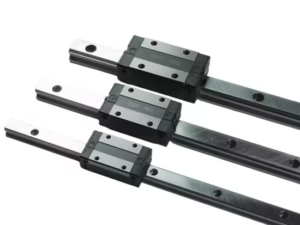Outline for Long-Form Article on Linear Motion Bearing
| Main Heading | Sub-Headings |
|---|---|
| Introduction to Linear Motion Bearing | Meaning and significance, Brief history of linear bearings, Importance in modern engineering |
| Linear Motion Bearing | Definition, Core functions, How it differs from rotary bearings |
| Types of Linear Motion Bearing | Ball bearings, Roller bearings, Plain bearings, Magnetic bearings |
| Working Principle of Linear Motion Bearing | Friction reduction, Smooth sliding movement, Contact mechanics |
| Advantages of Linear Motion Bearing | Precision, Load capacity, Reduced wear and tear, Low maintenance |
| Applications of Linear Motion Bearing | Automotive sector, Industrial machinery, Aerospace, Robotics, Medical devices |
| Materials Used in Linear Motion Bearing | Stainless steel, Ceramic, Composite materials, Plastic-based bearings |
| Factors to Consider When Choosing Linear Motion Bearing | Load requirements, Speed capability, Environmental conditions, Cost considerations |
| How Linear Motion Bearing Enhances Efficiency | Energy savings, Consistency in motion, Improved machine lifespan |
| Installation and Maintenance Tips for Linear Motion Bearing | Proper lubrication, Alignment accuracy, Common mistakes to avoid |
| Comparison: Linear Motion Bearing vs Traditional Bearing | Durability, Efficiency, Cost-effectiveness |
| Common Problems with Linear Motion Bearing | Noise issues, Overheating, Premature failure causes |
| Troubleshooting Linear Motion Bearing Failures | Identifying wear patterns, Checking lubrication, Misalignment corrections |
| Innovations in Linear Motion Bearing Technology | Self-lubricating designs, Smart sensor integration, Lightweight materials |
| Role of Linear Motion Bearing in Automation | Robotics, Conveyor systems, CNC machines |
| Energy Efficiency and Sustainability of Linear Motion Bearing | Reduced energy use, Eco-friendly materials, Long-term sustainability |
| Cost-Benefit Analysis of Linear Motion Bearing | Initial investment vs long-term savings |
| Future Trends in Linear Motion Bearing | AI-driven predictive maintenance, Nanotechnology in bearings |
| Case Studies on Linear Motion Bearing Applications | Automotive industry, Aerospace engineering, Medical equipment |
| Linear Motion Bearing in Robotics | Smooth movement, High precision, Reduced energy consumption |
| Safety Considerations in Using Linear Motion Bearing | Preventing mechanical failures, Operator safety |
| Global Market for Linear Motion Bearing | Market growth, Leading manufacturers, Future demand |
| FAQs about Linear Motion Bearing | Six detailed FAQs |
| Conclusion on Linear Motion Bearing | Key takeaways, Final thoughts |
| Suggestions for Internal & External Links | Inbound and outbound link recommendations |
Introduction to Linear Motion Bearing
Linear motion bearings are mechanical components that enable parts to move in a straight line with minimal friction. From industrial machinery to robotics, they have transformed how machines operate. By ensuring smooth sliding movements, they reduce wear, enhance efficiency, and extend the lifespan of equipment. Without them, precision engineering would face serious setbacks.
Linear Motion Bearing
A linear motion bearing is designed to provide unrestricted movement in one direction while minimizing friction. Unlike rotary bearings that allow rotational movement, these bearings focus solely on linear displacement. They serve as the backbone of automation, robotics, and medical machinery, making them indispensable in industries where accuracy is non-negotiable.
Types of Linear Motion Bearing
Linear bearings come in several forms:
Ball Bearings: Use steel balls to reduce friction.
Roller Bearings: Offer higher load capacity with cylindrical rollers.
Plain Bearings: Simplest type, using sliding surfaces.
Magnetic Bearings: Utilize magnetic fields for contactless operation.
Each type is selected based on load, speed, and operating environment.
Working Principle of Linear Motion Bearing
The working principle of a linear motion bearing revolves around reducing friction and ensuring smooth straight-line movement. When two surfaces move against each other, friction naturally arises. Linear bearings minimize this resistance through rolling or sliding mechanisms, which not only saves energy but also enhances precision.
In ball-type bearings, tiny steel balls roll between the shaft and the bearing, creating an almost frictionless environment. Roller bearings use cylindrical rollers instead of balls, spreading the load over a larger surface area. Plain bearings, on the other hand, rely on low-friction materials like PTFE (Teflon) or composite polymers. While they don’t have moving rolling elements, they can perform reliably in dusty or harsh environments where ball bearings might fail.
The essence of this principle lies in contact mechanics. By reducing the surface contact, linear motion bearings achieve smoother travel, even under heavy loads. Imagine a train gliding on well-lubricated tracks—that’s precisely how these bearings function in machines.
Advantages of Linear Motion Bearing
Linear motion bearings offer multiple advantages that make them superior in many applications. Some of the most notable benefits include:
High Precision: They provide exceptional accuracy, which is crucial in robotics, CNC machines, and aerospace systems.
Load Capacity: Designed to handle significant loads without deformation, they ensure reliability.
Reduced Wear and Tear: Since they minimize direct surface contact, machine parts last longer.
Low Maintenance: With proper lubrication, they require minimal servicing.
Energy Efficiency: Less friction means less energy wasted, contributing to greener operations.
All these benefits directly translate into improved performance and long-term savings for industries.
Applications of Linear Motion Bearing
Linear motion bearings find their place across a wide range of industries:
Automotive: From seat adjustments to electric steering systems.
Industrial Machinery: In conveyors, packaging machines, and assembly lines.
Aerospace: Ensuring accuracy in flight simulators and aircraft testing systems.
Robotics: Allowing precise movement in robotic arms.
Medical Devices: Supporting MRI machines, X-ray equipment, and surgical robots.
Their versatility is what makes them a preferred choice across different sectors. No matter the industry, where smooth linear movement is required, linear bearings step in as the go-to solution.
Materials Used in Linear Motion Bearing
The choice of materials plays a critical role in the performance of linear motion bearings.
Stainless Steel: Offers high strength and corrosion resistance, ideal for heavy-duty use.
Ceramic: Lightweight, resistant to wear, and suitable for high-speed applications.
Composite Materials: Provide strength with reduced weight, balancing cost and durability.
Plastic-Based Bearings: Affordable, lightweight, and effective in low-load applications.
Selecting the right material depends on environmental conditions, load requirements, and budget. For example, in food industries, stainless steel is favored due to hygiene and corrosion resistance, whereas robotics might use ceramic or composites for efficiency.
Factors to Consider When Choosing Linear Motion Bearing
Selecting the right bearing isn’t just about picking the strongest option; it’s about aligning performance with specific needs.
Load Requirements: Bearings should support both static and dynamic loads without failing.
Speed Capability: High-speed machinery requires bearings with low heat generation.
Environmental Conditions: Dust, moisture, and chemicals can impact performance.
Cost Considerations: While high-end bearings offer durability, cost-effective ones suit simpler operations.
Choosing correctly ensures smooth functioning and prevents costly downtime.
How Linear Motion Bearing Enhances Efficiency
One of the biggest selling points of linear motion bearings is efficiency. They allow machines to move smoothly with minimal energy wastage. Less friction means less power is needed to move heavy components. This efficiency translates into lower operational costs and longer machine life.
For example, in CNC machining, the precision offered by linear bearings reduces material waste and improves product quality. In automation systems, bearings ensure consistent operation without unexpected breakdowns, leading to higher productivity.
Installation and Maintenance Tips for Linear Motion Bearing
Proper installation and maintenance are crucial for maximizing bearing lifespan.
Lubrication: Always apply recommended lubricants to reduce friction.
Alignment: Incorrect alignment causes uneven wear and failure.
Clean Environment: Dust and debris can damage rolling elements.
Avoid Overloading: Ensure the load doesn’t exceed manufacturer specifications.
Many failures result from improper installation rather than product defects. Regular inspection and preventive maintenance ensure continuous smooth performance.
Comparison: Linear Motion Bearing vs Traditional Bearing
Traditional bearings are mainly used for rotational movement, whereas linear bearings focus on straight-line motion.
Durability: Both types are durable, but linear bearings handle repetitive straight-line motion better.
Efficiency: Linear bearings reduce sliding friction more effectively in straight movement.
Cost-effectiveness: Linear bearings may have higher upfront costs but save money over time due to reduced wear and maintenance.
In applications where high accuracy and low friction are essential, linear bearings clearly outperform traditional types.
Common Problems with Linear Motion Bearing
Despite their efficiency, linear bearings can face certain issues:
Noise Issues: Caused by lack of lubrication or misalignment.
Overheating: Due to excessive speed or load.
Premature Failure: Often linked to contamination or poor installation.
Identifying and addressing these problems early prevents long-term damage.
Troubleshooting Linear Motion Bearing Failures
When issues arise, troubleshooting becomes vital:
Check for Wear Patterns: Uneven wear indicates misalignment.
Inspect Lubrication: Dry or contaminated lubricant often causes failure.
Correct Misalignment: Even small deviations can shorten bearing life.
By applying systematic checks, operators can restore performance without replacing the entire system.




